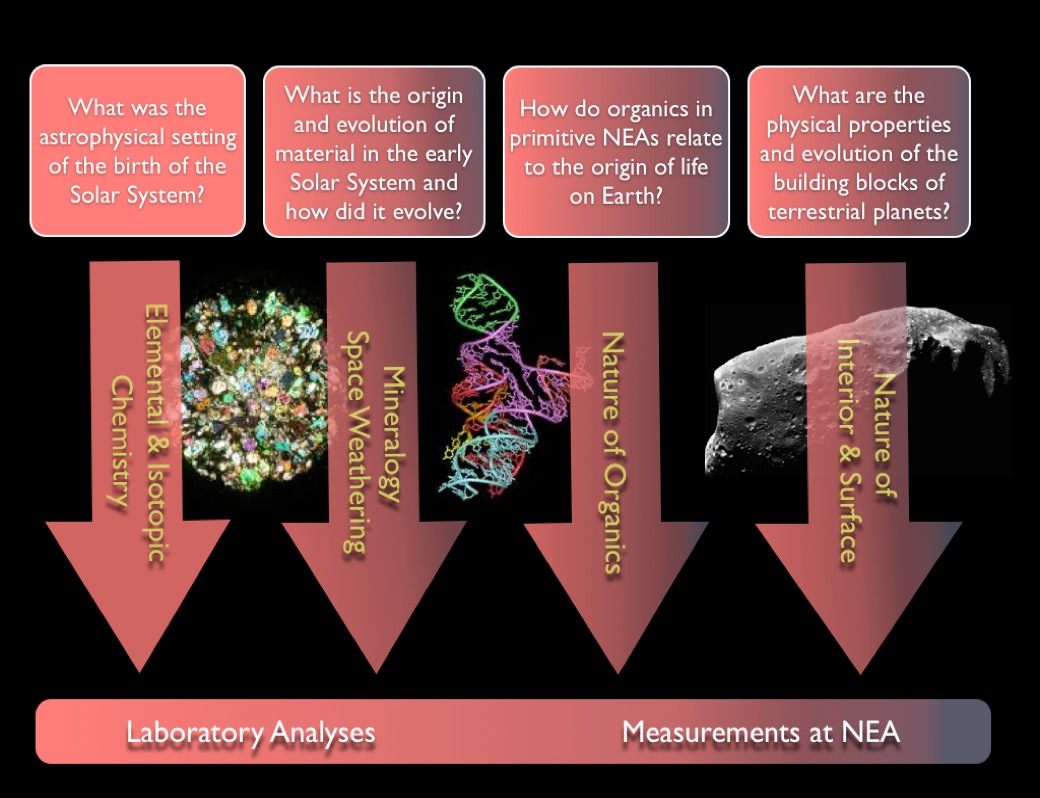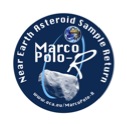Science goals and objectives of the MarcoPolo-R Mission
The MarcoPolo-R mission to a primitive Near Earth Asteroid will provide crucial elements to answer the following fundamental questions defining the science goals:
1) What was the astrophysical setting of the birth of the Solar System?
2) What is the origin and evolution of material in the early Solar System and how did it evolve?
3) How do organics in primitive NEAs relate to the origin of life on Earth?
4) What are the physical properties and evolution of the building blocks of terrestrial planets?

From the top level scientific goals indicated above the following more detailed scientific objectives of MarcoPolo-R were derived:
A. To determine whether primitive NEAs contain pre-solar grains previously unknown in meteorites, and the stellar environments in which these grains formed
B. To investigate the interstellar processes that have affected the pre-solar grains
C. To understand the nucleosynthetic events that contributed to provide short-lived radionuclides to the Solar System
D. To characterise the chemical and physical environment in the early solar nebula
E. To determine the timescales of solar nebula and accretional processes
F. To determine the origin of large isotopic variations in early Solar System materials
G. To characterize the large scale mixing processes in the protoplanetary disk
H. To establish the abundance and signature of water and other volatiles – a possible source for the Earth’s oceans and atmosphere
I. To determine the global physical properties of an NEA
J. To determine the physical processes, and their chronology, that shaped the surface of the NEA
K. To characterise the chemical processes that shaped the NEA composition
L. To link the detailed orbital and laboratory characterisation to meteorites and interplanetary dust particles (IDPs) and provide ground truth for the astronomical database
M. To determine the origin, diversity and complexity of organic species in a primitive asteroid
N. To provide insight into the role of organics in life formation
